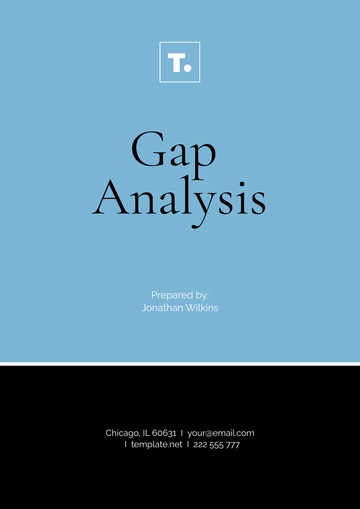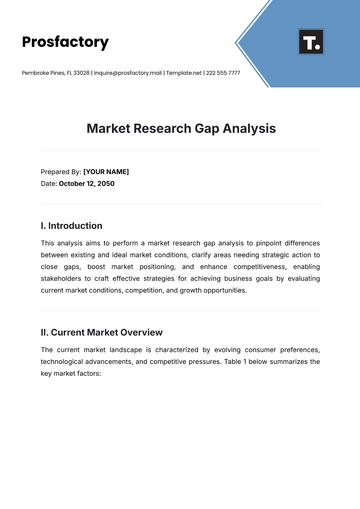Restaurant Customer Analysis
I. Executive Summary
This comprehensive Restaurant Customer Analysis for [Your Company Name] encompasses the entire calendar year of 2050, offering a detailed examination of customer demographics, preferences, behaviors, and feedback. The primary objective of this analysis is to identify key patterns and trends that can inform strategic decisions to enhance customer satisfaction and business performance. By understanding our customers more deeply, we aim to optimize our service offerings, improve customer retention, and increase overall profitability.
The analysis covers various dimensions of customer data, including demographics, visit frequency, spending habits, feedback on food and service quality, and overall satisfaction levels. The findings are presented with actionable recommendations to guide future marketing, operational, and service improvements.
II. Customer Demographics
Understanding the demographic profile of our customers is crucial for tailoring our marketing strategies and service offerings. The data collected provides insights into the age, gender, income levels, and geographic locations of our patrons.
Age Distribution
Age Group | Number of Customers | Percentage (%) |
|---|
18-25 | 1,500 | 30 |
26-35 | 1,800 | 36 |
36-45 | 1,000 | 20 |
46-60 | 500 | 10 |
60+ | 200 | 4 |
Insights: The majority of our customers (66%) are within the 18-35 age range, indicating a younger customer base. This suggests that marketing efforts should focus on digital and social media channels popular with these age groups.
Gender Distribution
Gender | Number of Customers | Percentage (%) |
|---|
Male | 2,700 | 54 |
Female | 2,200 | 44 |
Non-Binary | 100 | 2 |
Insights: The slight male predominance (54%) suggests that our marketing and service strategies should ensure inclusivity and appeal to all gender demographics.
Income Levels
Income Level | Number of Customers | Percentage (%) |
|---|
Below $30,000 | 1,000 | 20 |
$30,000 - $50,000 | 1,500 | 30 |
$50,000 - $70,000 | 1,200 | 24 |
$70,000 - $100,000 | 700 | 14 |
Above $100,000 | 600 | 12 |
Insights: A significant portion of our customers (50%) fall within the $30,000 - $70,000 income range. Pricing strategies and menu offerings should be mindful of this middle-income bracket to ensure affordability and value.
Geographic Locations
Location | Number of Customers | Percentage (%) |
|---|
Local (within 10 miles) | 3,000 | 60 |
Regional (within 50 miles) | 1,500 | 30 |
Out-of-Town (50+ miles) | 500 | 10 |
Insights: With 60% of customers being local, community engagement and local partnerships can enhance our brand presence. Regional customers (30%) indicate potential for targeted promotions to encourage repeat visits from nearby areas.
III. Visit Frequency and Spending Habits
Analyzing visit frequency and spending habits helps us understand customer loyalty and revenue patterns. This data is vital for developing loyalty programs and pricing strategies.
Visit Frequency
Visit Frequency | Number of Customers | Percentage (%) |
|---|
Weekly | 800 | 16 |
Bi-Weekly | 1,200 | 24 |
Monthly | 2,000 | 40 |
Occasionally | 1,000 | 20 |
Insights: A substantial number of customers (40%) visit monthly, indicating room for improvement in converting occasional visitors into more frequent patrons. Strategies like loyalty programs or special promotions can encourage more frequent visits.
Average Spending per Visit
Spending Range | Number of Customers | Percentage (%) |
|---|
Below $20 | 1,000 | 20 |
$20 - $40 | 2,000 | 40 |
$40 - $60 | 1,500 | 30 |
Above $60 | 500 | 10 |
Insights: Most customers (70%) spend between $20 and $60 per visit. Pricing and menu strategies should cater to this spending range while offering premium options for higher spenders.
IV. Customer Feedback and Satisfaction
Customer feedback provides direct insights into areas of excellence and opportunities for improvement. Analyzing this feedback helps us maintain high service standards and address customer concerns promptly.
Overall Satisfaction
Satisfaction Level | Number of Customers | Percentage (%) |
|---|
Very Satisfied | 1,800 | 36 |
Satisfied | 2,000 | 40 |
Neutral | 800 | 16 |
Dissatisfied | 300 | 6 |
Very Dissatisfied | 100 | 2 |
Insights: A combined 76% of customers are either very satisfied or satisfied, indicating a strong overall performance. However, the 8% dissatisfaction rate highlights areas that need attention to enhance customer experience.
Key Feedback Categories
Food Quality:
Positive Feedback: 88% praised the taste, presentation, and freshness of the food.
Negative Feedback: 12% mentioned inconsistencies, such as undercooked or overcooked dishes.
Service:
Positive Feedback: 85% highlighted excellent service, mentioning friendly and attentive staff.
Negative Feedback: 15% indicated slow service or unprofessional behavior.
Ambiance:
Positive Feedback: 90% appreciated the restaurant’s ambiance, noting the pleasant atmosphere and cleanliness.
Negative Feedback: 10% mentioned issues such as noise levels and uncomfortable seating.
Feedback Analysis Summary
Feedback Category | Positive Feedback (%) | Negative Feedback (%) |
|---|
Food Quality | 88 | 12 |
Service | 85 | 15 |
Ambiance | 90 | 10 |
Insights:
Food Quality: High satisfaction with food quality, but occasional inconsistencies need addressing through better kitchen practices and quality control.
Service: Excellent service overall, though improving service speed and professionalism during peak times is necessary.
Ambiance: The ambiance is a strong point, with minor adjustments needed to address noise and seating comfort.
V. Recommendations
Based on the detailed analysis of customer demographics, visit frequency, spending habits, and feedback, we propose the following recommendations to enhance customer satisfaction and business performance at [Your Company Name]:
1. Enhance Menu Variety
Objective: Address the 25% of feedback suggesting more variety.
Action Plan: Introduce seasonal menus and special dietary options to cater to diverse preferences. Regularly update the menu to keep offerings fresh and exciting.
2. Implement Loyalty Programs
Objective: Increase visit frequency and customer retention.
Action Plan: Develop a loyalty program offering rewards for frequent visits, such as discounts, free items, or exclusive access to new menu items.
3. Improve Service Efficiency
Objective: Reduce the 15% negative feedback on service speed and professionalism.
Action Plan: Conduct regular training sessions focused on service efficiency, customer interaction, and handling peak times. Implement a system for monitoring service performance and providing feedback to staff.
4. Optimize Ambiance
Objective: Maintain high satisfaction with ambiance while addressing minor complaints.
Action Plan: Implement soundproofing measures to reduce noise levels. Invest in comfortable seating options and regularly update the interior decor to maintain a pleasant dining environment.
5. Address Inconsistencies in Food Quality
Objective: Ensure consistent food quality to reduce the 12% negative feedback.
Action Plan: Standardize cooking procedures and conduct regular quality control checks. Provide ongoing training for kitchen staff to maintain high standards in food preparation and presentation.
6. Leverage Digital Marketing
Objective: Target the 18-35 age group effectively.
Action Plan: Increase engagement on social media platforms and utilize targeted ads to reach younger demographics. Promote special events, new menu items, and loyalty programs through digital channels.
VI. Conclusion
The 2050 Customer Analysis for [Your Company Name] provides invaluable insights into our customer base, their preferences, behaviors, and feedback. By understanding these dimensions, we can make informed strategic decisions to enhance customer satisfaction, improve service quality, and increase overall business performance. Implementing the recommended actions will position [Your Company Name] for continued success and growth in the competitive restaurant industry.
Prepared by: [Your Name]
Contact Information: [Your Company Number]
Date:
Restaurant Templates @ Template.net






























